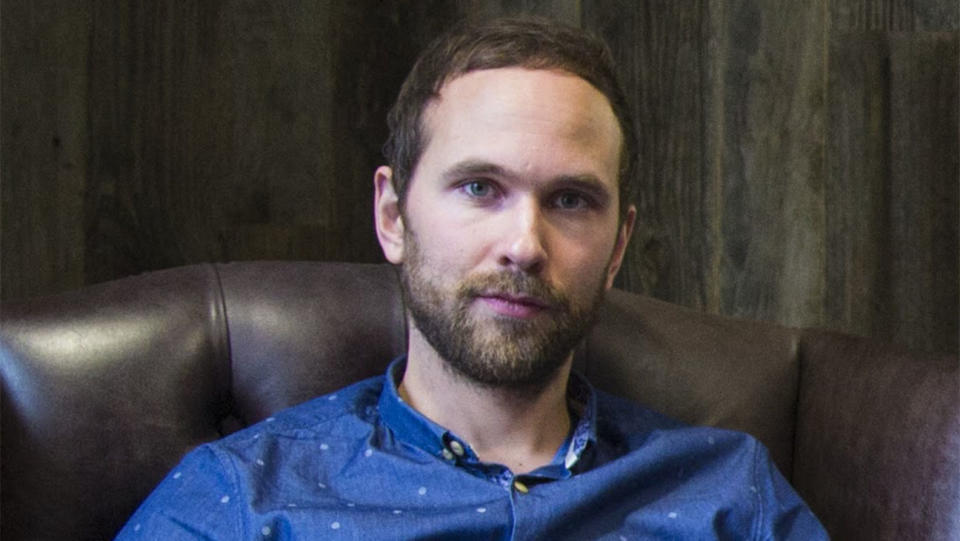“The Longest TV Negotiation I Have Ever Seen”: Behind Kate Bush’s ‘Stranger Things’ Sync Deal
- Oops!Something went wrong.Please try again later.
- Oops!Something went wrong.Please try again later.

Kate Bush’s 1985 single “Running Up That Hill” has been given “a whole new lease of life” with its starring role in a crucial scene of season four of Netflix’s Stranger Things, the music star said in June. Soon after, the song topped charts in multiple countries, setting records in the process.
The success of the integration has put a renewed spotlight on sync (or synchronization) deals, which place music into TV series, films, video games or other content, and which have been energized by, among other things, the growth of streaming video services. (In 2021, sync royalties for licensing songs in media including TV shows and movies totaled $302.9 million, up 14 percent from $265.2 million a year earlier.)
More from The Hollywood Reporter
Netflix Reveals Release Date for Clinton-Produced Doc 'In Her Hands'
'Drive My Car' Wins International Critics' Prize for Film of the Year
“TV in general has exploded in the last three or four years, because of Netflix, Amazon Prime, Disney and because everybody else is trying to get into this space,” Tim Miles, senior vp sync, U.K. and Europe, at Warner Music Group tells The Hollywood Reporter. “But we have never seen anything like this in terms of getting a number one record,” adds Tom Gallacher, senior director, digital & marketing at Rhino, Warner Music’s catalog arm. Warner Music and Rhino distribute music from Bush’s label, Noble and Brite.
Behind the success was a lot of hard work, as sync deals traditionally don’t happen overnight. “It’s not like advertising where we get a very quick ‘Can we use this song?’ and we have to work out if we can and if they can afford it,” explains Miles. “TV has a very long timeline. And because the music was so crucial to this scene, they had to know whether the song could be used. And it took about two years to really talk through with Kate and her team what this was going to be. This is probably the longest TV negotiation I have ever seen, because they had to get it right. The song is obviously so powerful. They must have had some backups, but I’m sure this was their absolute favorite.”
As is often the case when older songs go viral these days, the interest in “Running Up That Hill” has led consumers to searching for additional music from the artist, too. “There has been a big lift across all the catalog,” including the likes of “Babooshka” and “Wuthering Heights.” “So people have been going and exploring the rest, which is great,” highlights Gallacher. “And we are working with DSPs [Digital Service Providers], the likes of Amazon, Apple and Spotify, to encourage their editorial teams to promote curated playlists spanning Kate’s incredible wider catalogue. Kate is always very careful with what she does, and she takes time to look after her catalog and wants to make sure that it is presented in the right away.”

Other artists also have questions about whether they should allow their songs to be integrated into TV, film, video games, etc. So what do music executives tell them to lay out the case for sync deals? “When we are talking to some of our artists, who perhaps released music a while ago, we are telling them about the power of having their music used on TV,” says Miles. “We explain that it is not just about your song being used on an amazing TV show, which is an incredible thing by itself. But if it is used in a powerful way, you might get 10,000 people making their own playlist featuring your song. And then they might share that playlist on their Facebook or on their Instagram. And all of a sudden, there are all these almost fan-driven soundtracks produced.”
The Warner Music executives point out that they had already had a successful integration in season three of Stranger Things, which used Limahl’s “Never Ending Story,” which Warner Music distributes. “We all saw that and thought gosh, if ‘Running Up That Hill’ is used in a similar way, we are in for a treat,” Miles recalls.
He sees the rise of global streamers and other digital platforms as having opened up all sorts of new opportunities for music and artists. “We have seen this increase in interest in music,” he notes. “If you rewind 10 or 15 years, in the U.K. we just had the BBC and ITV, and the sorts of dramas they were making didn’t really use music in the way that we see music being used now. So it has been really fascinating to see this acceleration.”
Don’t ignore films as a big potential driver for interest in catalog music either, the executives highlight. Led Zeppelin’s “Immigrant Song,” for example, which Warner Music distributes, was featured in Thor: Ragnarok and its teaser trailer, leading interest in it to spike on various platforms. “That was a great way not just to introduce it to new audiences, but also change the band’s perception of the way these things can be used,” says Gallacher.
Sometimes, songs suddenly end up getting searched even when they feature in films that aren’t new. “Sometimes they are in a film that was released 10 years ago, but it has just been added to Netflix,” explains the executive.
TikTok and other digital players have also been providing boosts for catalog music. “We have seen other [successes], not film-related, for example with TikTok things like Fleetwood Mac’s ‘Dreams,'” which in 2020 returned to the Billboard charts thanks to a viral video, says Gallacher. “There are all these old tracks now just popping up in different ways and being able to find new audiences that are treating them the same way they treat a song that just came out last week.”

Overall, it is a different world for music compared to just a few years ago. “We live in a world where it is normal to listen to a playlist at home or in the car that has lots of music and from lots of different eras,” says Miles. “I have got two kids. It is very normal for them to listen to music from the ’70s, ’80s, ’90s on a Sunday morning. And I’m not sure if that was the case 15 years ago, because you had to put a CD on. And TV obviously plays a pivotal role now because the normality of music from all eras being present means that when a song is used, it doesn’t necessarily feel old or new. It just feels fresh. And I think that’s the important thing. TV has a great opportunity to revive songs and show that it is not about age, it is just about how fresh it feels. As for Kate Bush, that song could have been written this year. It is so fresh.”
So, how does the sync business model work? “First of all, we obviously get paid when a song is used. Just like the director gets paid, the makeup artist gets paid, we have to be paid, but it is a very fair transaction,” says Miles, without disclosing details. “When we charge — and this is widely known in TV and film — we base it on the film budget. So, you could be a massive artist using a tiny film, and the film company won’t have to pay much money for it. Obviously, if that film goes on to be hugely successful, we often don’t get any additional income. However, if it is hugely successful, and the music is used, then of course, there is going to be a bump in streams and interest in the artist. But equally, if it is a big, big production, then we will get a fair fee for that.”
Miles says the Warner Music team uses a system called Colour Cues, which it developed to match colors representing different moods with musical works. “We are constantly looking for ways of speaking the language of creators,” he explains. “So what we have done is we have created, I think, 50 cards with different colors. So green, for example, stands for natural, beginning, unity, building. We look at scientific studies into music and color.”
Not all songs are categorized on the Colour Cues system yet, but “Wuthering Heights,” for example, features there as white, which stands for dreamy. “Running Up That Hill,” which isn’t on Colour Cues yet, would be between the colors green (building), black (driving) and orange (inventive), with the fact that it straddles so many being a testament to the breadth of the song, Miles says.
“As a team, we are inherently visual in terms of how we interpret music, because we work with creators who create visual content,” the Warner Music executive explains. “So, we do a lot of pre-emptive work to categorize our music based on how it looks. That may sound silly, but color plays a key part in initiatives like this. It really helps when we talk to directors and creators when they are looking for a song that fits, and they are starting with the visuals.”

